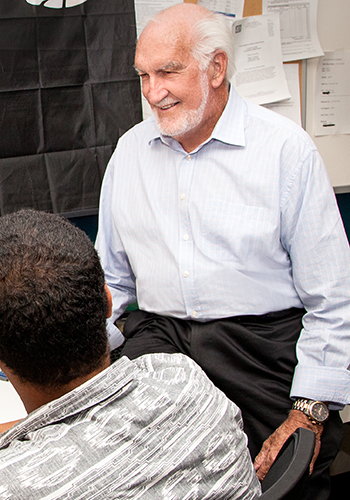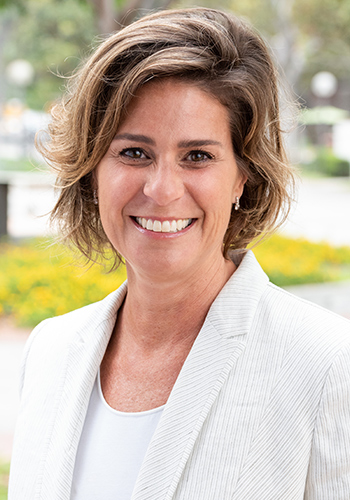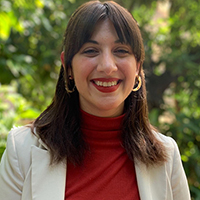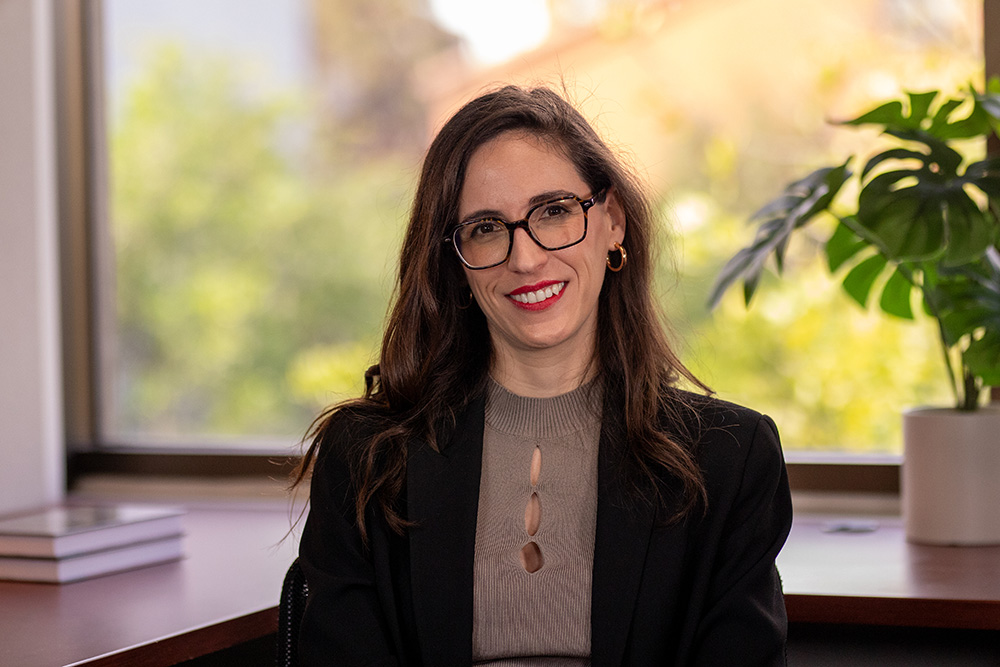The Post-Conviction Justice Project has made juvenile justice system reform a priority, bringing hope to thousands of persons sentenced to life without parole

|
| Prof. Heidi Rummel |
The juvenile justice system was created to put youth who have violated the law on the track to becoming responsible citizens. It was designed to be rehabilitative, based on the understanding – which brain science has since proven – that children are different from adults. All of that changed in the 1990s.
“With the rise of gangs and violence, young people were increasingly committing very serious crimes, and society saw them as scary, irredeemable monsters,” says
Professor Heidi Rummel, co-director of the Post-Conviction Justice Project (PCJP) at the USC Gould School of Law. “Critics were quick to label them super predators and throw them away.”
Kids as young as 14 in California (and as young as 10 in some other states) were thrown into adult court and given an adult sentence, which was, in many cases, life without any real possibility of release on parole.
For the past 15 years, PCJP has focused its energies on changing a system that has harshly treated so many young people — and disproportionately young people of color — with results that will impact tens of thousands. Through litigation and, most broadly, through legislation, PCJP has led the way toward hope for incarcerated youth. Since 2008, PCJP has written or co-sponsored nearly every juvenile justice bill in California.

|
| Nina Rosser (JD 2021) |
“I’ve got a hundred stories for you,” Rummel says. One of them is Deandre Moore.
Changing a Life
A PCJP client since 2012, Moore is the latest incarcerated person, sentenced to LWOP, whose murder conviction is likely to be set aside, thanks to the efforts of PCJP co-directors Rummel and
Clinical Professor Michael Brennan and law students like Nina Rosser (JD 2021), who spent two years on Moore’s case.
Moore was sentenced to life without parole for his role in a carjacking that ended in murder when he was 16. Moore didn’t kill or intend to kill anyone. He also could not have imagined that the man he was with would end up shooting someone during the crime. He drove the getaway car. He was found guilty of felony murder and has already served 27 years.
Many factors have come into play in Moore’s case. For one, the elements of California’s felony murder special circumstance (particularly, “major participant” and “reckless indifference to life”) were re-examined in two decisions in the California Supreme Court in the 2010s. For another, PCJP worked on a coalition to pass Senate Bill 1437, which requires the prosecution to prove that a defendant killed or intended to kill to be convicted of murder.
On Moore’s behalf, PCJP filed a petition challenging Moore’s murder conviction and advancing a novel argument that youth is relevant to culpability for a felony murder special circumstance, first in Superior Court and then in the Court of Appeals; both were denied. PCJP then filed with the California Supreme Court, who sent the case back to the Court of Appeals with instructions to consider whether youth (defined as 26 and younger by California’s Youth Offender Laws, also co-sponsored by PCJP) must be considered. After oral argument, the Court of Appeals issued an opinion in their favor in less than two weeks.
“This is significant not only because Mr. Moore’s murder conviction will almost certainly be vacated, but also because it applies to thousands of youth convicted of felony murder where their age was never considered,” Brennan says.
When Rosser called Moore with the news, he was practically speechless. He told her all he wanted to do was see his family, including his wife, daughters and grandchildren.
Rosser says Moore’s case was a tremendous learning experience. “I don’t know where else I would have gotten this experience except PCJP. I’m incredibly grateful for the trust of Heidi and Mike, who gave me the autonomy to develop the case and arguments, and for the trust of the client. Being able to say I briefed a precedent-setting appeal in the California Supreme Court and the Court of Appeals, and argued it there, is incredible. I’m going into public defense, so it’s been a big leg up.”

|
| Prof. Michael Brennan |
PCJP has represented numerous clients in the same situation as Moore. For instance, PCJP won William Hodgson’s freedom under the same new felony murder law. Hodgson was sentenced to life without parole at 16 for holding open an electric gate so his adult co-defendant could escape after spontaneously shooting a robbery victim.
“There’s absolutely no penological purpose of sending a 16-year-old to prison to die there when he did not commit murder and was not directly involved in the murder itself,” Brennan says. “So all of this legislation and litigation is finally moving us toward a more just system.”
Shaping Policy
On the legislative side, PCJP has taken a leading role in reforming extreme sentences for youth, co-sponsoring and lobbying for laws in collaboration with other advocate organizations such as Human Rights Watch and the Anti-Recidivism Coalition. PCJP led in passing the first juvenile LWOP bill; and PCJP wrote and advocated for laws and regulations creating the Youth Offender Parole Process.
“SB 260 was a watershed moment,” Rummel says. “In prison, hope is like air, and for many years people inside were suffocating. Youth Offender parole went a long way to bring hope by creating a real chance to come home.”
USC Gould students in Rummel’s Legislative Policy Practicum are actively involved in juvenile justice reform as well, working side by side with people with lived experience in the system to write laws and meet with legislators at the Capitol.
The work is life-changing not only for clients but also for students. Rosser’s experience on the litigation side changed her perspective on her career.
“Going into public defense, you tend to lose a lot,” Rosser says. “PCJP helped me reframe what winning and losing looks like. If I can be an advocate for my clients and treat my clients with the dignity and humanity that they are owed as their birthright, then maybe that relationship is the win.”




















